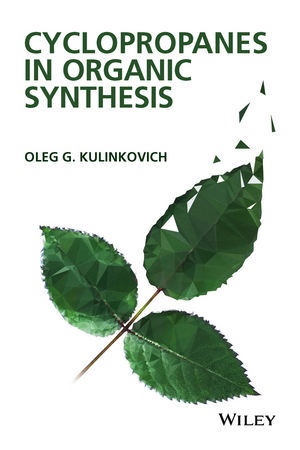Read more
Informationen zum Autor Oleg Kulinkovich was the head of the Department of Organic Chemistry from 1993-2003 and the head of the Laboratory of Organoelement Synthesis at Belarusian State University and visiting professor at Tallinn University of Technology. His seminal work on titanium-catalyzed cyclopropanation of carboxylic esters with Grignard reagents bearing ß-hydrogen atoms (Kulinkovich reaction) is very well-known. Dr. Kulinkovich has published several reviews and original articles on organic synthesis in leading international journals. Klappentext This is a practical guidebook about cyclopropanes that thoroughly surveys derivatives and transformations, synthetic methods, and experimental efficiency as a gateway for further research and development in the field.* Provides comprehensive lists and synthetically-oriented synopses of cyclopropane chemistry review references along with publication data on applications in the syntheses of natural and related biologically active compounds* Acts as a resource to help readers better understand cyclopropane applications for the efficient realization of synthetically important organic transformations and popular experimental procedures* Includes new developments and up-to-date information that will lead to original methodologies for complex organic synthesis* Stresses universality, flexibility, and experimental efficiency of a strategy based on preparing cyclopropane derivatives and performing ring cleavage reactions with inexpensive reagents* Focuses on the synthetic potential of cyclopropane applications, for example the synthesis of natural compounds and other target-oriented syntheses via cyclopropane intermediaries, as well on their planning by retrosynthetic analysis Zusammenfassung This is a practical guidebook about cyclopropanes that thoroughly surveys derivatives and transformations, synthetic methods, and experimental efficiency as a gateway for further research and development in the field. Inhaltsverzeichnis Preface ix Part I Reactivity and availability 1 Introduction, 1 Reference, 2 1 Structure and Reactivity of the Cyclopropane Species 3 1.1 Geometry and Bonding, 3 1.2 Energy, 4 1.3 Spectra, 5 1.4 Cyclopropyl Cations, 5 1.5 Cyclopropyl Anions, 6 1.6 Cyclopropyl Radicals, 7 1.7 Cyclopropylidenes, 7 1.8 Cyclopropylcarbinyl Cations, 8 1.9 Cyclopropylcarbinyl Anions, 8 1.10 Cyclopropylcarbinyl Radicals, 10 1.11 Cyclopropylcarbenes, 10 1.12 Conclusion, 11 References, 13 2 Ring Cleavage Reactions 15 2.1 Cyclopropyl Activation, 16 2.1.1 Halogen, Oxy, and Sulfur Substituted Cyclopropanes, 16 2.1.2 Alkylidenecyclopropanes, 19 2.2 Cyclopropylcarbinyl Activation, 23 2.2.1 Halogeno, Oxy, Acyl and Metallomethyl Cyclopropanes, 23 2.2.2 Alkylidenecyclopropanes, 27 2.2.3 Vinyl and Ethynyl Cyclopropanes, 29 2.2.4 1,2?]Divinylcyclopropanes, 33 2.2.5 Acceptor Cyclopropanes, 35 2.2.6 Donor Cyclopropanes, 38 2.2.7 Donor-Acceptor Cyclopropanes, 43 2.3 Conclusion, 48 References, 49 3 Synthesis of Cyclopropanes 57 3.1 1,3?]Cyclization Reactions, 57 3.1.1 Cyclizations with Cleavage of Two Single Bonds, 58 3.1.2 Cyclizations with Cleavage of One Double Bond and One Single Bond, 59 3.1.3 Cyclizations with Cleavage of Two Double Bonds, 62 3.2 [2 + 1] Cyclization Reactions, 65 3.2.1 Cycloaddition of Carbene Equivalents to Olefins, 66 3.2.2 Coupling of 1,1?]Carbodianion and 1,2?]Carbodication Equivalents, 79 3.2.3 Coupling of 1,1?]Carbodication and 1,2?]Carbodianion Equivalents, 83 3.3 Addition Reactions to the Double Bond of Cyclopropenes, 88 3.4 Interconversion of Cyclopropanes, 90 3.5 Conclusion, 90 Reference...

